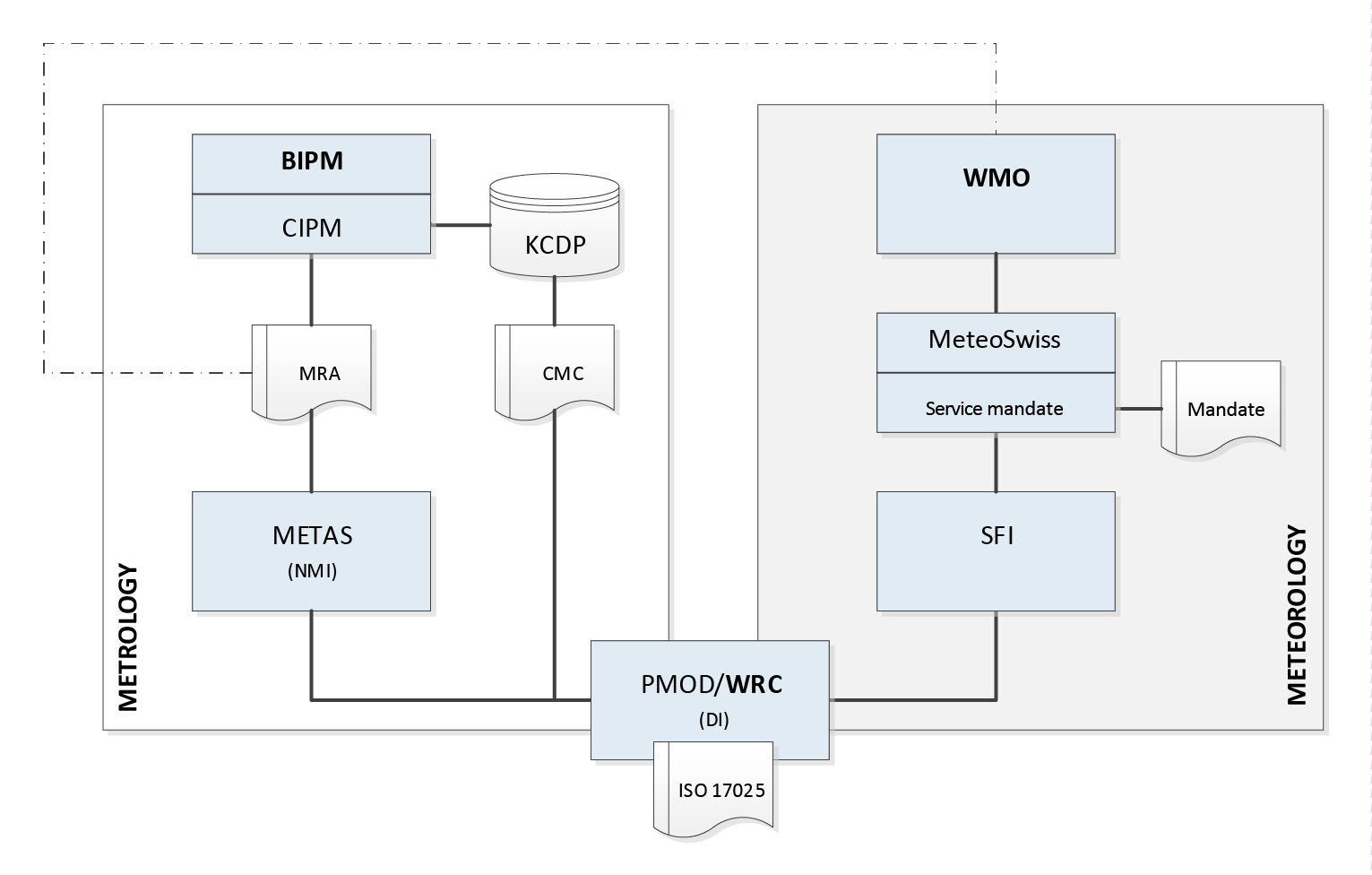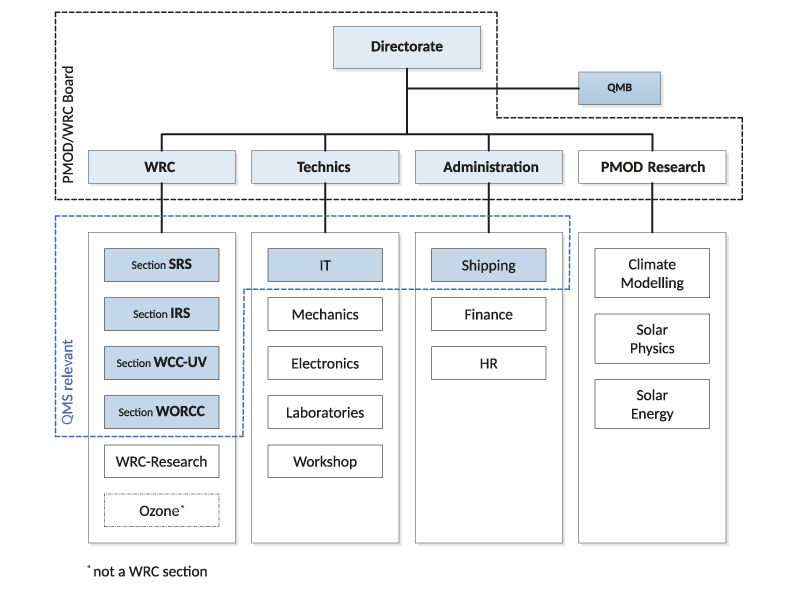Quality Management System (QMS) for the Calibration of Radiation Measurement Instruments
The basis of the mandate of the World Radiation Center (WRC) – to provide homogeneity of global solar radiation measurements – is the agreement between MeteoSwiss and the “Schweizerisches Forschungsinstitut für Hochgebirgsklima und Medizin” Foundation. This regulation also contains the recommendation of the WMO-CIMO VII (1977) relating to the tasks of the WRC.


